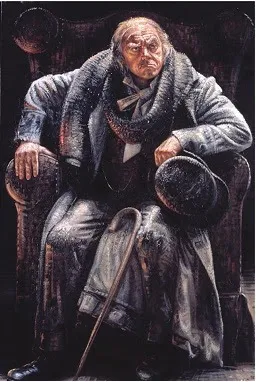“A squeezing, wrenching, grasping, biting, clutching, covetous old sinner” is hardly hero material, but this is exactly what makes A Christmas Carol by Charles Dickens such an unforgettable book and its hero, Ebenezer Scrooge such an extraordinarily enduring character.
In the book's celebrated opening scene, on the night before Christmas the old miser Ebenezer Scrooge sits in his freezing cold counting house, oblivious to the discomfort of his shivering young assistant Bob Cratchit. Scrooge is unremittingly rude to relatives and visitors alike who drop in to convey their Christmas greetings or ask for a contribution to charity. Scrooge returns to his equally chilly mansion where he has an extraordinary supernatural experience. The spirit of his dead partner, Marley appears recounting tales of eternal suffering that he is condemned to endure because of the mean and uncharitable deeds that Marley did when he was alive. Marley informs Scrooge that three other supernatural visitors will make their appearance over the next three nights. The rest of the book traces the events that happen when these three otherworldly beings visit Scrooge. |
A Christmas Carol's enduring appeal lies in its heart rending appeal to help those living in impoverished conditions. The highly sentimental and touching pictures of Christmas celebrated in homes where festivities cannot coexist with grinding poverty, told in typical Dickensian style, make it both a literary masterpiece and a plea for social reform. But all is not gloom and doom —there are brilliant flashes of humor, memorable characterization and a deep understanding of human nature. As with all Dickens' works, this one too is peculiarly suited to being read aloud, especially when the family gathers round a cozy fire on Christmas Eve!
